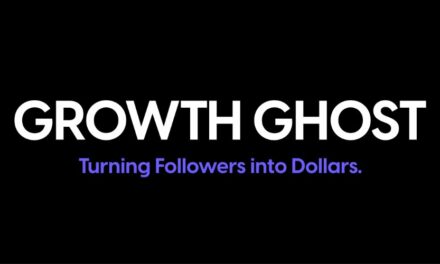five things to do
Google’s eagerness to deliver the content people seek led to the creation of its Search Generative Experience. It pushes down sponsored and organic links in favor of delivering detailed content so searchers don’t have to click.
If you’ve opted into the SGE experiment as a user, you already know what I’m talking about. It’s the article-type response generated by Google that appears at the top of the search engine results page.
So how do you get your content to be part of that experience – and still rank well below? Do these five things:
1. Follow Google’s EEAT principles: Expertise, Experience, Authoritativeness, and Trustworthiness matter a lot. Fortunately, EEAT mimics quality content practices. Provide detailed, accurate information that demonstrates your credentials and links to credible sources.
2. Write for searchers and AI: Craft content that will flow naturally for your target audience to consume. Write conversationally. Don’t use jargon or technical terms that could complicate the text for the reader and the AI algorithm. Be clear and concise. Make the content scannable.
3. Structure your content logically: Like your audience, AI tools prefer content that’s easy to follow. Pay attention to how you structure the content. Write helpful headings and subheadings. To see how well you did, read just the headings and subheadings. Do they tell what the story’s about? Do they logically follow each other? Adjust as necessary.
4. Think about your audience’s prompts: Similar to creating content for traditional search-optimized content, integrate keywords and phrases that your audience is likely to use in their prompts. The easiest way to do this is to input a question into search, then look at the People Also Ask questions to see their related questions. Organic results and knowledge panels in the results also can be helpful.
5. Experiment: Introduced this year, SGE is designed to evolve as it better learns what searchers want from it. You can do the same – craft different text, formats, etc. Analyze what works best for Google’s AI algorithm to improve the chances of your content showing up in the results. Of course, look at your website’s analytics, too, to see how SGE results impact website traffic, conversions, etc.
Helpful Resources:
- Google Search Quality Rater Guide (Google)
- Control Your Snippets in Search Results (Google)
- Navigating Google’s Search Generative Experience: Your Preparation Guide (SEO Clarity)
- SEO Tips for Content Creators Who Want To Build an Audience (The Tilt)
– Ann Gynn
CEX 2024 registration is now OPEN. Content Entrepreneur Expo returns to Cleveland, Ohio, May 5-7, 2024. Save your seat today at the best prices ever!
Supported by Lulu
Don’t Throw It Out!: With 6.3M Instagram followers, Creative Explained’s Armen Adamjan needed a way to turn his plant hack videos into a sustainable creator business. Using Lulu Direct, he sells his books based on his videos directly to his fans. Selling books helped Armen turn his passion into a successful business. Learn how Armen did it.
| GET THE CASE STUDY |
5 things to know
Money
-
Strike up: Will creators unite to fight for their rights? Some say the success of the 2023 Hollywood strikes could be the beginning of a global movement. (The Conversation)
Tilt Take: Expert creators don’t build a business based on popularity, so we don’t see a need to unionize.
Audiences
-
Newsletter numbers: LinkedIn now lets authors and pages with newsletters see subscriber demographics and audience consumption over time. Analytics is just one of the new tools available. (LinkedIn)
Tilt Take: Audience data is valuable. Asking your LinkedIn audience to provide their emails for your traditional newsletter is even more valuable. -
Maybe viewing: A new study, Sound You Can See: Podcasting’s Video Dilemma, finds 36% of those surveyed say they prefer to watch full episodes, 17% watch highlights or clips, and 44% say their viewing habits depend on the podcast. (Sounds Profitable)
Tilt Take: Even if most of your audience doesn’t view it, it still makes sense to do video with your podcast, especially since it’s not that hard.
Tech and Tools
-
AI orbit: Google launched its new large language model (aka the informer of its generative AI). Gemini will now power the Bard chatbot. Early reports indicate it exceeds state-of-the-art results on 30 of the 32 widely used LLM research and development benchmarks. (Platformer)
Tilt Take: Slower to the generative AI game, will Google’s Gemini deliver a bigger audience or better results?
And Finally
-
Parameters circling: Expect regulations on generative AI technology and publishing its results to be considered by countries around the world. The key to thwarting their impact now? Disclose AI-generated content to your audience. (Partner Content at The Information)
Tilt Take: How politicians define “AI-generated content” will be an interesting challenge.
5 things at the tilt
- Here’s everything you need to know about what happened at OpenAI in less than five minutes. (Content Inc.)
- Joe and Robert discuss Google’s AI product launch of Gemini and whether it can save its search business. (This Old Marketing)
- Don’t miss out! Register now for CEX 2024 before early bird pricing disappears!
- Join Tilters Michelle Peterson Clark and Ann Gynn at 12 p.m. EST Tuesday for Tilt Your Business: A Weekly Mastermind for Content Entrepreneurs.
- ICYMI: Successful Creators Know If They’re Wearing the Sales or Brand-Building Content Hat
Be Part of the TILT Nation
Share The Tilt Newsletter with other content creators and get exclusive swag and more.
Your unique link: https://www.thetilt.com?rh_ref=[RH CODE GOES HERE]
Track your referrals here.
Or share via Twitter, LinkedIn, Facebook, or email.
*Please note the rewards program is only available to US readers at this time. The Tilt reserves the right to reject referrals at their discretion.
Get more of the Full Tilt stories on TheTilt.com.
Know a content creator who’s going full tilt? DM us or email [email protected].
Want to advertise on The Tilt? Go here.
Or email us at [email protected].
Interested in the tools we use? Check out our Tilt Tech Stack here.
Was this email forwarded to you? Get your own sub here.
Copyright ©2023 Lulu Press, Inc. All rights reserved.
Update your preferences | Unsubscribe | 700 Park Offices Dr., Suite 250, Durham, NC 27709







